Are The Baffling La Marche Cave Paintings Authentic Or Cunning Forgeries?
Ellen Lloyd - AncientPages.com - Every now and then, we come across strange and controversial archaeological discoveries that are naturally of great interest to all truth-seekers. In most cases, investigating the unusual findings can be difficult because sometimes ancient objects are “lost” or misplaced.
This problem is not present in cave paintings because engravings cannot be easily “removed” out of sight. This brings us to today’s subject, which concerns very unusual cave paintings in France.
Few European places have caused controversy like the strange La Marche cave. Scientists continue to argue over the unorthodox cave paintings that challenge our knowledge of ancient history. Are the extraordinary cave paintings authentic or cunning forgeries?

Faces carved on the floor of a cave at La Marche. Credit: Fuentes Oscar
Frankly, in this case, we must say that these baffling cave paintings seem almost too good to be true. Did someone commit a horrible archaeological crime by deliberately creating these paintings? If so, then for what reason?
La Marche is a cave located near the village of Lussac-les-Châteaux, Vienne, in western France. It is one of the most important archaeological sites for stone carvings from the Magdalenian period, 17,000 - 12,000 years ago.
Between 1937 and 1940, Léon Péricard and Stéphane Lwoff discovered the cave complex, which contained approximately 1,500 limestone stones with carvings depicting bears, lions, antelopes, and horses, as well as 155 curiously realistic human figures.
The humans depicted on the cave walls are puzzling. They are very different from other Paleolithic drawings and resemble caricatures of real people: old men, children, men whose faces are shaved, and women (often obese), sometimes dressed in coats and with hats and boots. Several of them have ornaments on their bodies that can be interpreted as paintings or perhaps tattoos.
The interpretations of these remarkable carvings are controversial and still disputed. Many scientists consider them forgeries because the ‘real’ people in La Marche Cave resemble modern art.
The carvings are also difficult to interpret because sometimes one image overlaps with another or several of them.
The depictions date back to about 15,000 - 13,000 B.C., and we know that at the time, Europe was largely under the weight of glaciers. It was before great civilizations appeared.
If the paintings are authentic, one must question the existence of primitive man as we know it. However, it’s hard to imagine the drawings are real because nothing similar has been found elsewhere in Europe.
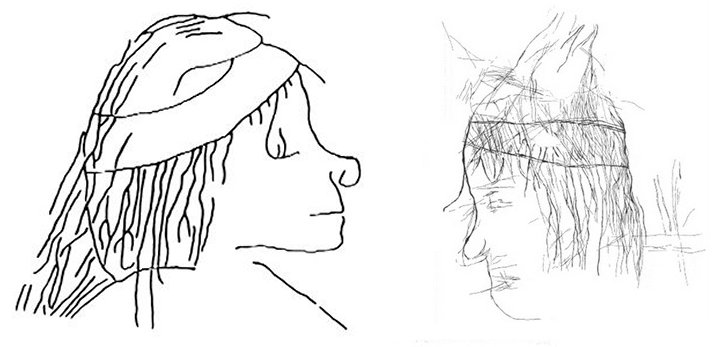
The La Marche cave paintings are intriguing, but are they authentic? Credit: Fuentes Oscar
The Lascaux cave, located on a hill at Dordogne, near Montignac, in southern France, is famous for its outstanding Magdalenian paintings, but the images we come across there certainly do not resemble anything we find in the La Marche cave.
Ancient Pages explained previously, the “brilliant prehistoric paintings of Lascaux, with their anatomically perfect details of all depicted animals, are rendered with great art skills like shadowing, highlighting, stenciling, and the use of perspective, a technique that was not rediscovered until the Golden Age in Greece.

Lascaux cave paintings depicting animals. Credit: Public Domain
However, looking at the millennia-old Paleolithic artwork of Lascaux, where only simple stick figures represent a man, we cannot tell if the artists were a Neanderthal man or Cro-Magnon man or perhaps someone else.”
Compared to the Lascaux cave paintings, the carved etchings at La Marche appear crude and far too modern.
It’s also worth noting that people depicted on the walls at La Marche are dressed in rather modern clothes. This may perhaps not be so surprising considering ancient figurines of men and women wearing modern-day clothes have been previously encountered in Europe.
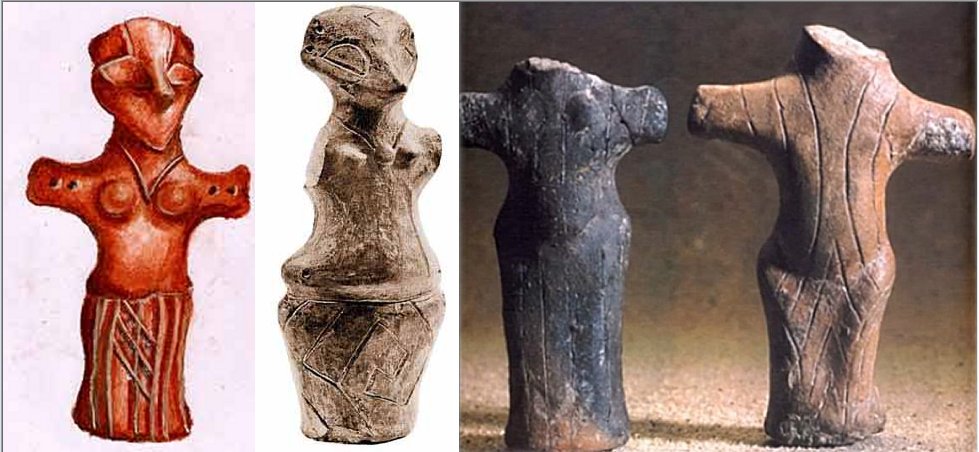
The Vinca figurines.
“The Vinca legacy includes among others, curious masks and the most informative costumed figurines depicting women in extremely modern clothes like narrow skirts, and sleeveless upper-body panels, complimented with hip belts, aprons, jewelry, shoes, caps, hairstyles, bracelets, necklaces, and medallions.”
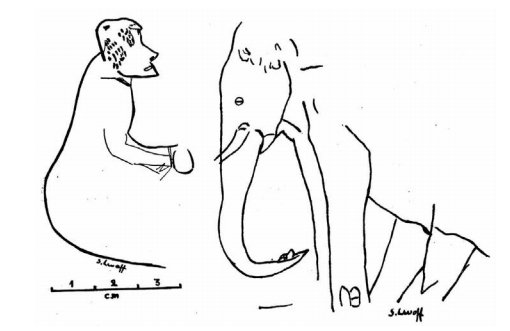
Is this an authentic carving of a woman who lived during the Magdalenian period? Credit: Fuentes Oscar
However, the Vinca culture in southeastern Europe, present-day Serbia, and smaller parts of Bulgaria, Macedonia, and Romania flourished from about 6000 BC to 3000 B.C.. Though Vinca's living style reminds us of our own, it cannot be compared to the engravings found inside the La Marche cave.
Some scientists think the La Marche cave paintings are authentic, but there are also many experts who doubt the engravings were produced during the Magdalenian period.
Regarding the La Marche cave paintings, the verdict is still out there.
Updated on July 31, 2024
Written by Ellen Lloyd – AncientPages.com
Copyright © AncientPages.com All rights reserved. This material may not be published, broadcast, rewritten or redistributed in whole or part without the express written permission of AncientPages.com
Expand for referencesFuentes, Oscar & Lucas, Claire & Robert, Eric. (2017). An approach to Palaeolithic networks: The question of symbolic territories and their interpretation through Magdalenian art. Quaternary International. 503. 10.1016/j.quaint.2017.12.017.
More From Ancient Pages
-
 Domovik (Domovoi): Household Spirit In Ancient Slavic Beliefs
Featured Stories | Apr 3, 2016
Domovik (Domovoi): Household Spirit In Ancient Slavic Beliefs
Featured Stories | Apr 3, 2016 -
 Secrets Of Viking Crystal Sunstones Revealed By Modern Science
Archaeology | Apr 5, 2018
Secrets Of Viking Crystal Sunstones Revealed By Modern Science
Archaeology | Apr 5, 2018 -
 Historical Document Confirms Martyrdom Of Japanese Christian Retainers 400 Years Ago
News | Feb 26, 2021
Historical Document Confirms Martyrdom Of Japanese Christian Retainers 400 Years Ago
News | Feb 26, 2021 -
 Political Debates In Ancient Rome: Great Harshness, Personal Attacks And Unpleasant Atmosphere
Archaeology | Aug 29, 2018
Political Debates In Ancient Rome: Great Harshness, Personal Attacks And Unpleasant Atmosphere
Archaeology | Aug 29, 2018 -
 Sacrificial Remains From The Iron Age Unearthed Near Aarhus, Denmark
Archaeology | Oct 14, 2015
Sacrificial Remains From The Iron Age Unearthed Near Aarhus, Denmark
Archaeology | Oct 14, 2015 -
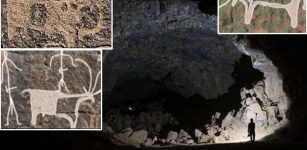 Human Occupation In Lava Tube Cave In Saudi Arabia – First Evidence Discovered
Archaeology | Apr 18, 2024
Human Occupation In Lava Tube Cave In Saudi Arabia – First Evidence Discovered
Archaeology | Apr 18, 2024 -
 Pyramid Of The Moon And Avenue Of The Dead Could Be Foundation For Urban Design Of Teotihuacan
Archaeology | Jul 31, 2020
Pyramid Of The Moon And Avenue Of The Dead Could Be Foundation For Urban Design Of Teotihuacan
Archaeology | Jul 31, 2020 -
 Unique Purbeck Marble Found On England’s Oldest Historic Shipwreck
Archaeology | Jun 14, 2024
Unique Purbeck Marble Found On England’s Oldest Historic Shipwreck
Archaeology | Jun 14, 2024 -
 Radar Discovery Of Unknown Space Beyond Tutankhamun’s Burial Chamber May Lead To Queen Nefertiti’s Tomb
Archaeology | Feb 21, 2020
Radar Discovery Of Unknown Space Beyond Tutankhamun’s Burial Chamber May Lead To Queen Nefertiti’s Tomb
Archaeology | Feb 21, 2020 -
 Stonehenge Is Older Than Mankind – Archaeologist Suggests
Archaeology | Apr 12, 2018
Stonehenge Is Older Than Mankind – Archaeologist Suggests
Archaeology | Apr 12, 2018 -
 Who Were The Sin Eaters?
Ancient History Facts | Jan 21, 2020
Who Were The Sin Eaters?
Ancient History Facts | Jan 21, 2020 -
 Enigmatic 2,000 -Years-Old Carved Stone Owl Pipes – An Ancient Unsolved Secret Of Illinois
Artifacts | Oct 4, 2018
Enigmatic 2,000 -Years-Old Carved Stone Owl Pipes – An Ancient Unsolved Secret Of Illinois
Artifacts | Oct 4, 2018 -
 10 Magnificent Ancient Libraries
Featured Stories | Feb 6, 2016
10 Magnificent Ancient Libraries
Featured Stories | Feb 6, 2016 -
 Cyclops – First Generation Of Giants Who Were Prisoners Of Tartarus
Featured Stories | Mar 21, 2018
Cyclops – First Generation Of Giants Who Were Prisoners Of Tartarus
Featured Stories | Mar 21, 2018 -
 Evidence People Lived In Australian Desert 50,000 Years Earlier Than Previously Thought
Archaeology | Sep 22, 2018
Evidence People Lived In Australian Desert 50,000 Years Earlier Than Previously Thought
Archaeology | Sep 22, 2018 -
 Top 10 Archaeological Discoveries 2023
Archaeology | Dec 27, 2023
Top 10 Archaeological Discoveries 2023
Archaeology | Dec 27, 2023 -
 Unknown Prehistoric Henge Site Detected Near Famous Newgrange In Ireland’s East Coast
Archaeology | Jul 13, 2018
Unknown Prehistoric Henge Site Detected Near Famous Newgrange In Ireland’s East Coast
Archaeology | Jul 13, 2018 -
 Graveyards Of Ancient British And French Giants Revealed In Old Documents And Journals
Ancient Mysteries | Jul 4, 2020
Graveyards Of Ancient British And French Giants Revealed In Old Documents And Journals
Ancient Mysteries | Jul 4, 2020 -
 Dangerous Underground Secret In The Valley No-One Dares To Enter
Featured Stories | Jun 26, 2018
Dangerous Underground Secret In The Valley No-One Dares To Enter
Featured Stories | Jun 26, 2018 -
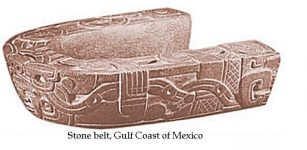 Millennia Old Ceremonial Stone Belt And Maya Pok-A-Tok Ball Game
Ancient Traditions And Customs | Nov 28, 2017
Millennia Old Ceremonial Stone Belt And Maya Pok-A-Tok Ball Game
Ancient Traditions And Customs | Nov 28, 2017
